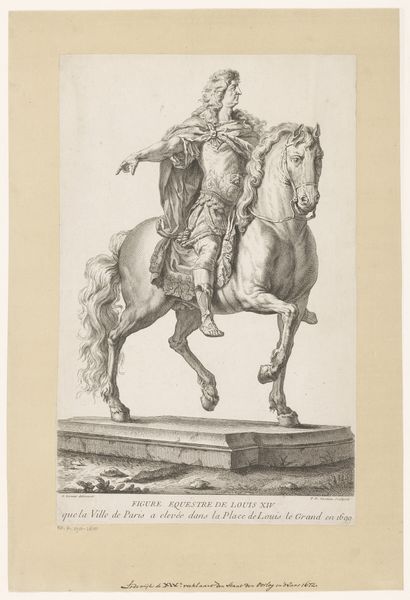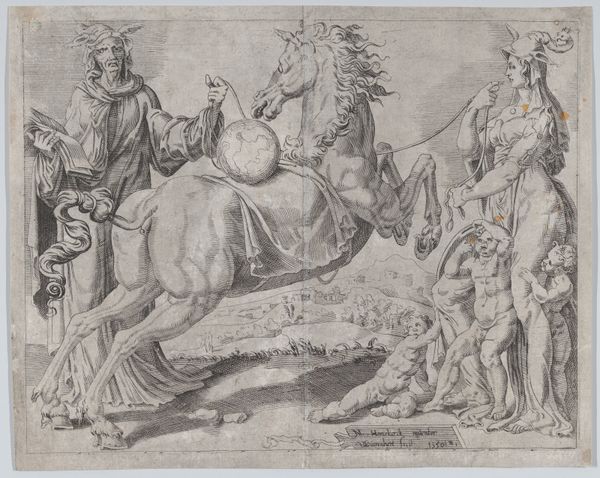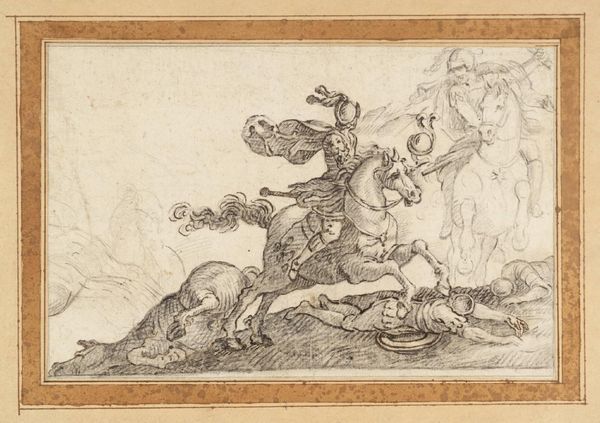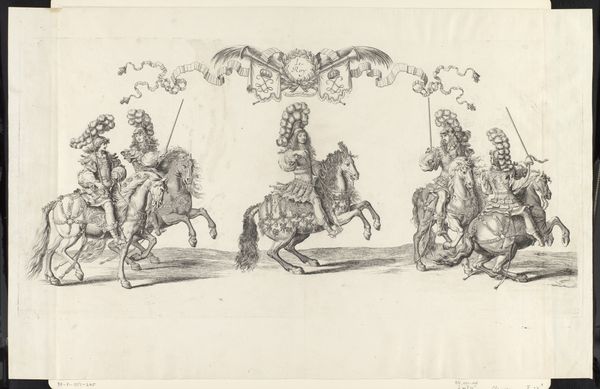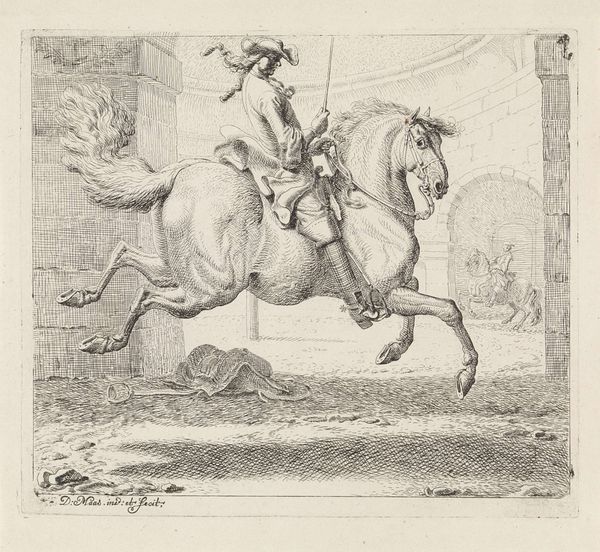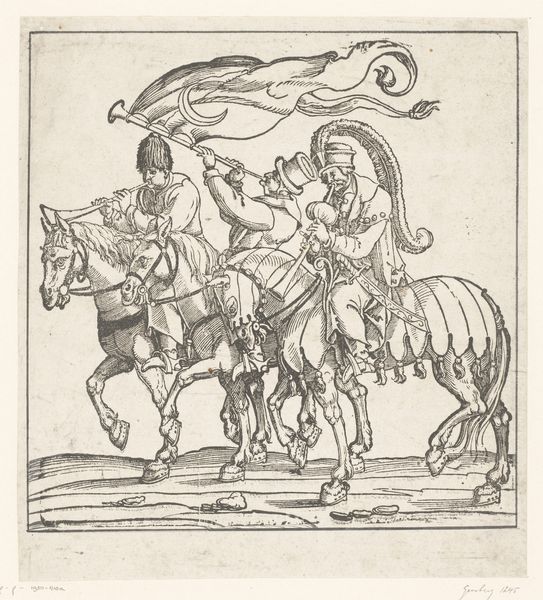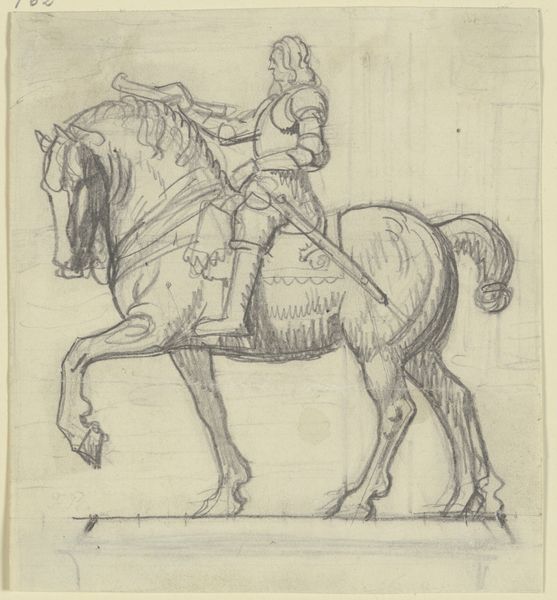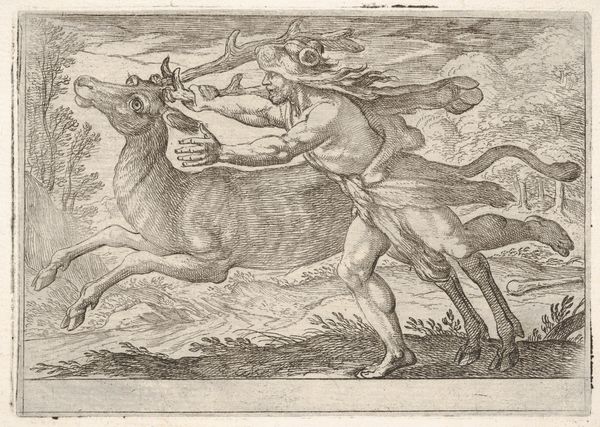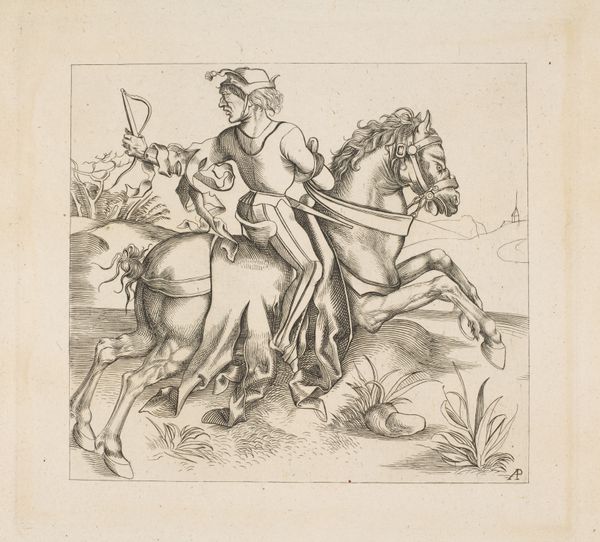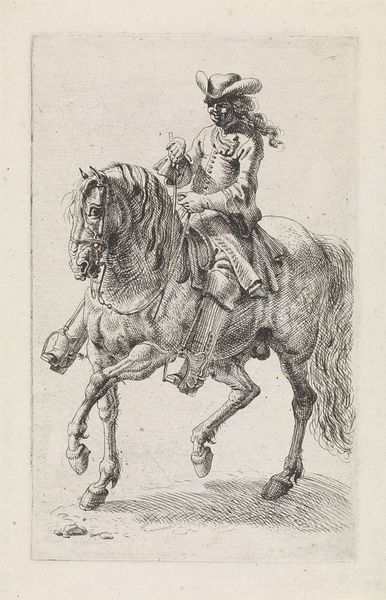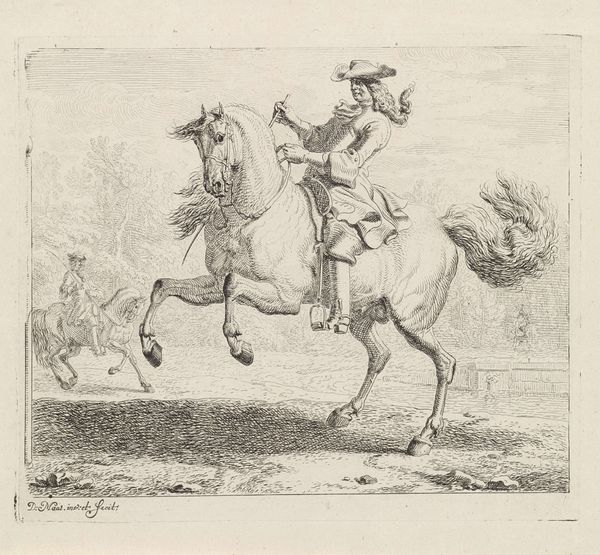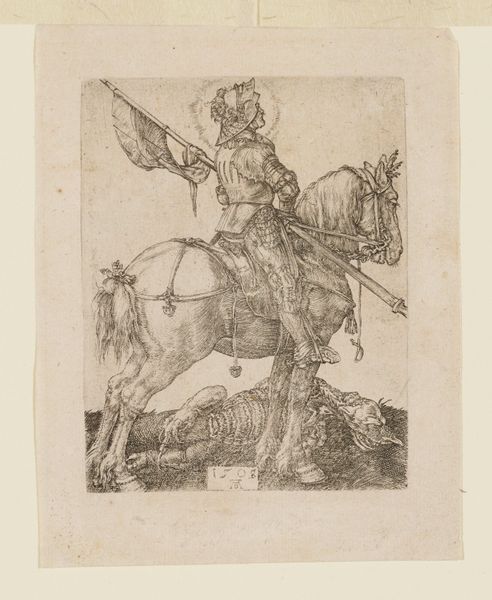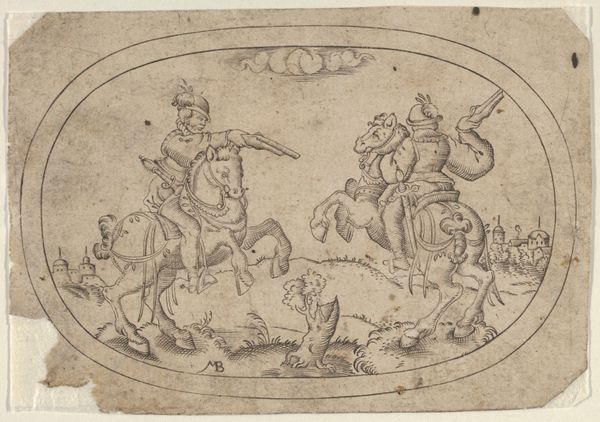
Ruiterportret van Karel IV, hertog van Lotharingen met Nancy op de achtergrond before 1664
0:00
0:00
drawing, engraving
#
portrait
#
drawing
#
baroque
#
history-painting
#
engraving
Dimensions: height 352 mm, width 471 mm
Copyright: Rijks Museum: Open Domain
Claude Déruet created this print, "Equestrian Portrait of Charles IV, Duke of Lorraine with Nancy in the Background," sometime in the 17th century. The print captures Charles IV as more than just a ruler; he's a symbol of power during a period of shifting political landscapes. Charles IV, the Duke of Lorraine, wasn't just any nobleman; he was a figure caught in the turbulent currents of European power struggles, particularly during the Thirty Years' War. This portrait presents him as a leader, poised and powerful on horseback, overlooking Nancy, his capital. But it also prompts us to consider the narratives of those less visible. Who made his armor, cared for the horse, or even printed this image? Their stories are intertwined with his. Consider how Déruet uses the equestrian portrait, traditionally a symbol of male authority, to present Charles IV. Does it reinforce established hierarchies, or does it offer a more nuanced view of leadership in a time of conflict? While the piece certainly monumentalizes the Duke, it also memorializes a moment in time. What does it mean to assert one's power through an image, especially when that power is constantly challenged?
Comments
No comments
Be the first to comment and join the conversation on the ultimate creative platform.
